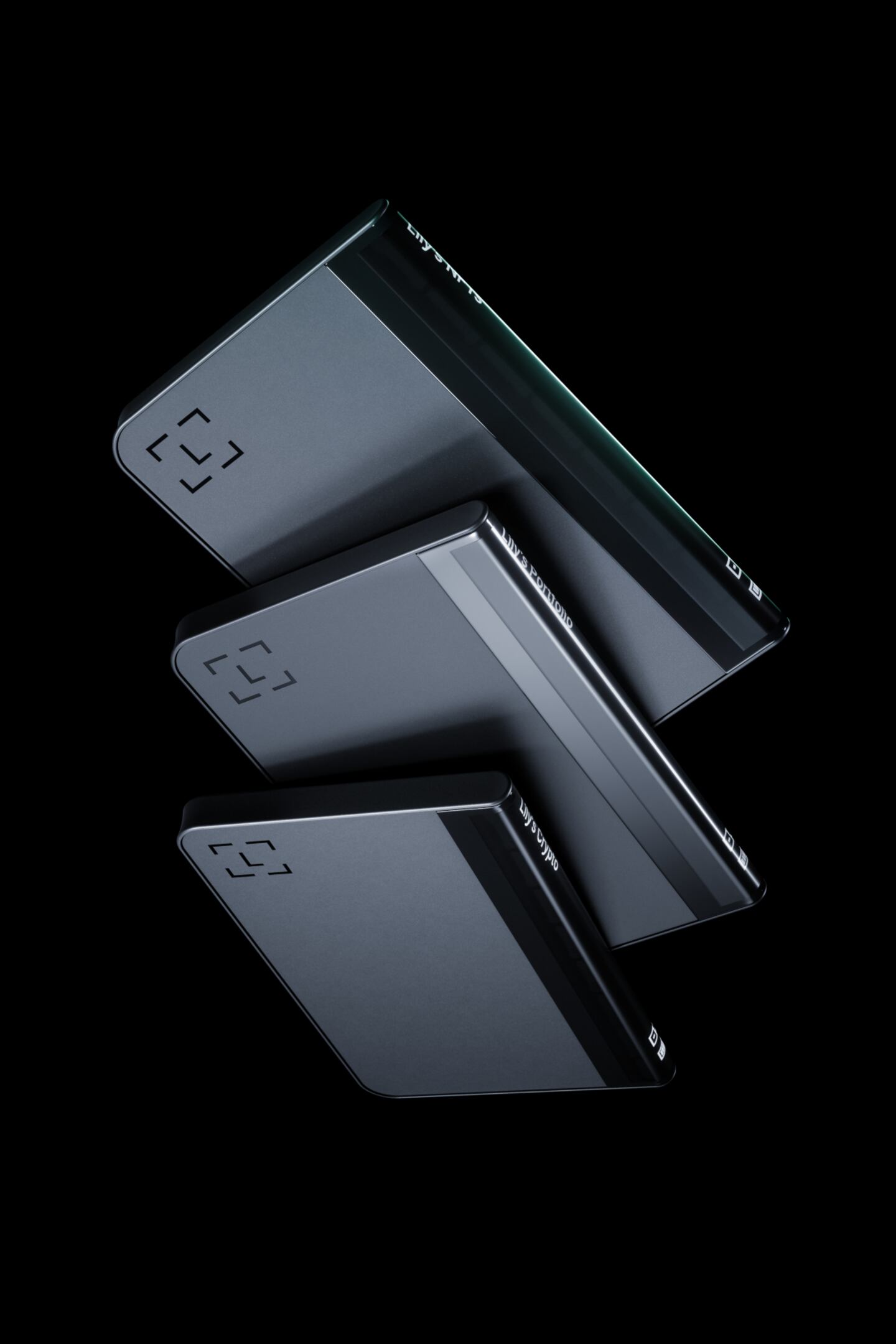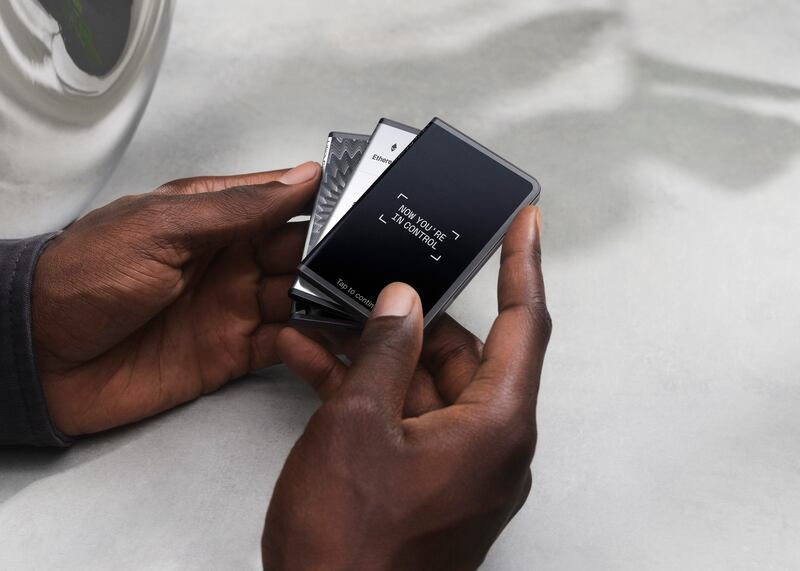
The Business of Fashion
Agenda-setting intelligence, analysis and advice for the global fashion community.

Agenda-setting intelligence, analysis and advice for the global fashion community.

During a year in which cryptocurrency and NFT values plunged, the crypto market suffered one of its biggest blows last month with the collapse of FTX, a crypto exchange previously seen as one of the more stable and reputable companies in the space. For crypto sceptics, it raised still more questions about the long-term future of digital assets.
Ian Rogers, the former chief digital officer of LVMH and now chief experience officer of Ledger, a maker of hardware wallets for crypto assets, is not among them.
“We’re concerned that people have been defrauded and lost money. We’re concerned that the market may cool off and it might take people a while to come back in. Am I concerned that maybe we won’t have digital assets over the long term?” Rogers said. “Not the slightest bit.”
The company imagines a future where everything from a Soho House membership card to your passport will one day be a digital document secured and carried in a hardware wallet. In an effort to bring that vision to life, Ledger has teamed with Tony Fadell, the former Apple designer and engineer credited with creating the iPod and co-creating the iPhone, on a new product Rogers and Fadell tout as having the potential to put digital assets in the pockets of mainstream consumers around the world, much like the iPod did for digital music. Called Stax, it’s a hardware wallet planned for release in early 2023 and a bet that, despite the events of this year, crypto and digital assets could still become widely used with the right product.
ADVERTISEMENT
“Tony saw an opportunity coming from his experience for something that was much more beautiful, much more desirable and also more mainstream” than Ledger’s previous devices, Rogers said.
To understand why Ledger sees Stax as a step forward for digital assets, it helps to understand how a crypto wallet works. Despite the name, it doesn’t hold any assets itself. Those are stored on the blockchain. It’s really a private key for your blockchain address. But a wallet connected to the internet is vulnerable to hacking — a rampant problem in the crypto world — while one that’s not is more secure but also more difficult to use.
Ledger’s hardware wallets try to offer the best of both options. They’re a bit like USB drives that can store your private key and let you complete transactions within the device. According to Rogers, they’re far more secure than a phone or computer for holding digital assets, and for that reason will only become more important as more of our stuff becomes digital. In his view, the luxury industry will be affected by digital assets more than most, because as more of our lives take place online, our status symbols will be increasingly digital as well. Ledger even collaborated with Fendi on a hardware wallet earlier this year.
What was missing from Ledger’s lineup, in the opinion of Rogers and Fadell, was hardware that could draw in the average consumer — much as the iPod wasn’t the first mp3 player on the market but was the one to spark the boom in digital music.
Where Ledger’s previous products tend to look like USB drives, Stax is a roughly credit card-sized gadget with a wraparound e-ink screen — so you can tell what’s inside — and embedded magnets that make them easily stackable. In hand, it’s a bit like a mini hard drive with a satisfying weight, and the different displays the e-ink screen allows make the devices feel like trading cards if you’ve got more than one. Ledger sees it as the foundation for an ecosystem of products, again like the iPod, which wasn’t an overnight success.

Fadell came up with the design after surveying all the hardware wallets on the market and finding them to be mostly plain black devices that didn’t communicate anything about the assets they held, which was a problem. Ledger has found many customers buy multiple wallets to store different types of assets, keeping the bulk of their cryptocurrency in one wallet, for instance, while using another for collectable NFTs. Fadell found a flexible e-ink screen that allowed for an always-on display without using much power. From playing with his kids’ Magna-Tiles building sets, he got the idea to use magnets to make them stack easily.
“You have to have a blend of rational and emotional,” he said, adding it’s the combination that enables a connection with a large set of consumers.
Whether digital assets will follow the path of digital music is yet to be seen. When Apple first announced the iPod, co-founder and then chief executive Steve Jobs introduced it by saying music is a part of everyone’s life and will always be around.
ADVERTISEMENT
“This is not a speculative market,” he said.
Financial speculation, however, has been a driving force in the market for crypto and NFTs. The trajectory of that market this year has likely deterred plenty of curious consumers from jumping in.
Fadell compared the current moment to the late 1990s and early 2000s, when the Dot-com bubble swelled and burst but ultimately gave rise to much of the internet and technology of today. Amid the current tech turmoil, Ledger hopes to be one of the companies to come out stronger on the other side.
 Opens in new window
Opens in new windowGucci, Balenciaga, Farfetch and others are adopting crypto payments. But before brands follow, they need to consider a number of factors, from how to handle transactions to the risks involved.
The reasons some fashion NFTs are successes and others fall flat goes beyond having big, recognisable brands involved and comes down to factors like their creativity, audience and value for the price.
Brands like Tiffany, Prada and Nike-owned RTFKT are among those using the digital tokens to offer exclusive access to tangible goods.

Marc Bain is Technology Correspondent at The Business of Fashion. He is based in New York and drives BoF’s coverage of technology and innovation, from start-ups to Big Tech.
The nature of livestream transactions makes it hard to identify and weed out counterfeits and fakes despite growth of new technologies aimed at detecting infringement.
The extraordinary expectations placed on the technology have set it up for the inevitable comedown. But that’s when the real work of seeing whether it can be truly transformative begins.
Successful social media acquisitions require keeping both talent and technology in place. Neither is likely to happen in a deal for the Chinese app, writes Dave Lee.
TikTok’s first time sponsoring the glitzy event comes just as the US effectively deemed the company a national security threat under its current ownership, raising complications for Condé Nast and the gala’s other organisers.